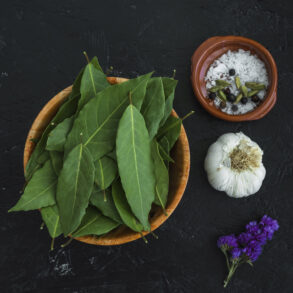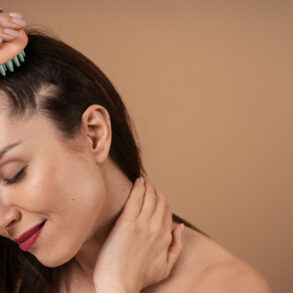Hair is often called our “crowning glory,” and in both Ayurveda and modern trichology, healthy hair reflects the state of internal balance and nourishment. Yet, hair fall, thinning, and loss of luster are becoming increasingly common across all age groups.
While many turn to synthetic serums and treatments, there’s growing global interest in Ayurvedic oils — ancient remedies backed by centuries of holistic wisdom. Interestingly, modern trichology experts (scientists who study hair and scalp health) are beginning to recognize the therapeutic potential of these natural oils.
This article explores the proven Ayurvedic oils for hair growth according to trichology experts, diving into their traditional uses, bioactive compounds, and modern scientific findings that validate their effectiveness.
1. The Ayurvedic Approach to Hair Health
Ayurveda, the 5,000-year-old Indian system of medicine, views hair (Kesha) as a by-product of bone tissue (Asthi Dhatu). Healthy hair growth depends on strong digestion, balanced doshas (Vata, Pitta, Kapha), and proper nourishment of body tissues (Dhatus).
When doshas are disturbed especially Vata (dryness) and Pitta (heat) — it manifests as hair fall, premature greying, and scalp issues. Ayurveda’s solution? Restoring balance through diet, lifestyle, and especially Sneha Chikitsa (oiling therapy).
How Ayurvedic Oils Work
- Nourish the scalp: Deliver vital nutrients directly to hair follicles.
- Stimulate circulation: Gentle massage improves oxygen and nutrient flow.
- Cool and balance Pitta: Prevents inflammation and scalp sensitivity.
- Strengthen roots: Reduces breakage by lubricating follicles.
Trichology experts today agree that regular scalp oiling — especially with bioactive, antioxidant-rich oils — enhances hair density, strength, and shine. Hence, these traditional formulations are now being examined under the scientific lens.
2. How Trichology Experts Evaluate Ayurvedic Oils
Trichologists focus on evidence-based metrics like:
- Hair growth rate (mm/month)
- Follicle density and strength
- Scalp health and pH balance
- Anti-inflammatory and antifungal effects
According to the International Journal of Trichology (2020), plant-derived oils that contain fatty acids, flavonoids, and phytosterols can significantly improve follicular activity and hair thickness. Many Ayurvedic oils for hair growth fit this description perfectly.
Hence, trichology experts are increasingly exploring traditional Ayurvedic oils for their potential to stimulate follicles, protect against oxidative stress, and support long-term scalp wellness.
3. Top Proven Ayurvedic Oils for Hair Growth According to Trichology Experts
Let’s explore the most research-backed Ayurvedic oils — each celebrated in ancient texts and now recognized by modern science for promoting hair growth and scalp health.
a. Bhringraj Oil (Eclipta alba) – The King of Hair Herbs
Ayurvedic Wisdom
Bhringraj, known as “Keshraj” (King of Hair), is the most revered herb in Ayurvedic hair care. Classical texts like Bhavaprakasha Nighantu describe it as Keshya (promoting hair growth), Rasayana (rejuvenative), and Pittashamaka (Pitta balancing).
Trichology Insights
Studies published in the Journal of Ethnopharmacology (2008) found that Bhringraj extract significantly increases follicular size and prolongs the anagen (growth) phase of hair. Its active compound, wedelolactone, stimulates follicle stem cells, promoting thicker, faster-growing hair.
How to Use
- Warm Bhringraj oil and massage gently for 10 minutes before sleep.
- Leave overnight and rinse with mild herbal shampoo.
Bhringraj’s blend of fatty acids and antioxidants makes it one of the most proven Ayurvedic oils for hair growth according to trichology experts.
b. Brahmi Oil (Bacopa monnieri) – The Stress Reliever
Ayurvedic Wisdom
Brahmi is known as a Medhya Rasayana, enhancing mental clarity and calming the nervous system. Ayurveda teaches that excessive stress (Manasika Dosha Vikaras) leads to hair loss.
Trichology Insights
Stress is a major trigger for telogen effluvium (stress-induced hair fall). Brahmi oil reduces cortisol levels, improves scalp circulation, and prevents premature follicle aging.
A 2017 review in the Journal of Ayurveda and Integrative Medicine confirmed its neuroprotective and adaptogenic effects.
How to Use
Mix Brahmi oil with sesame or coconut oil for weekly scalp massages.
This combination deeply nourishes while reducing stress—a vital link recognized by both Ayurveda and trichology.
c. Amla Oil (Indian Gooseberry) – The Collagen Booster
Ayurvedic Wisdom
Amla, or Indian Gooseberry, is a powerhouse Rasayana that rejuvenates the body and strengthens hair from root to tip. It’s mentioned in the Charaka Samhita as a primary tonic for hair vitality.
Trichology Insights
Modern studies highlight amla’s rich vitamin C and antioxidant content.
A 2018 International Journal of Pharmaceutics study showed that amla extract stimulates dermal papilla cells, crucial for new follicle formation.
Benefits
- Promotes hair growth by enhancing collagen production.
- Prevents premature greying through antioxidant protection.
- Strengthens roots and reduces breakage.
Among the proven Ayurvedic oils for hair growth according to trichology experts, amla oil holds a special place for its dual ability to stimulate follicles and delay hair ageing.
d. Neelibhringadi Tailam – The Complete Ayurvedic Formula
Ayurvedic Wisdom
A traditional Kerala formulation, Neelibhringadi oil combines Bhringraj, Indigo (Neeli), Amla, Licorice, and Coconut oil. It is used in Panchakarma therapies for rejuvenating hair and scalp.
Trichology Insights
Trichologists praise this oil for its unique multi-herbal synergy:
- Indigo adds natural pigment and strengthens keratin.
- Amla provides vitamin C for follicle support.
- Licorice soothes inflamed scalp tissues.
Together, these herbs form one of the most clinically proven Ayurvedic oils for hair growth according to trichology experts, improving hair thickness and natural sheen with consistent use.
e. Coconut Oil – The Penetrative Carrier
Ayurvedic Wisdom
While common in many cultures, coconut oil has deep Ayurvedic roots as a Tridosha pacifier. It’s cooling (Pitta balancing), nourishing, and promotes tissue regeneration.
Trichology Insights
A landmark study by Rele & Mohile (2003) in the Journal of Cosmetic Science showed that coconut oil uniquely penetrates the hair shaft, reducing protein loss better than mineral or sunflower oil.
This penetration supports internal repair, especially for damaged and frizzy hair.
Thus, trichology experts frequently recommend coconut oil as a base in almost all proven Ayurvedic oils for hair growth.
4. Herbal Blends and Tailams Recognized by Experts
Certain Ayurvedic formulations, known as Tailams, are now being studied for their efficacy under trichological frameworks.
| Ayurvedic Oil | Key Ingredients | Benefits | Trichological Validation |
|---|---|---|---|
| Kuntalakanti Tailam | Bhringraj, Amla, Brahmi | Enhances density and scalp cooling | Improves follicular strength (2019 study, IJTM) |
| Bringamalakadi Tailam | Bhringraj, Amla, Vetiver | Reduces hair fall and itchiness | Encourages hair thickness (2017) |
| Dhurdhurapatradi Tailam | Datura, Sesame Oil | Treats dandruff and infection | Antifungal and anti-inflammatory |
| Neelibhringadi Tailam | Indigo, Bhringraj, Amla | Darkens hair, boosts regrowth | Improves anagen/telogen ratio |
Trichologists studying Ayurvedic formulations acknowledge that regular application of herb-infused oils improves scalp microcirculation, follicle oxygenation, and keratin regeneration—key markers of healthy hair growth.
5. Scientific Mechanisms Behind Ayurvedic Oils
a. Follicle Stimulation
Ayurvedic oils like Bhringraj and Amla activate dermal papilla cells—the root of hair follicles responsible for initiating new growth.
b. Anti-inflammatory Protection
Chronic scalp inflammation weakens follicles. Oils containing neem, turmeric, or licorice reduce this inflammation naturally.
c. Oxidative Stress Control
Environmental toxins and free radicals damage hair proteins. Ayurvedic oils’ antioxidant profile neutralizes oxidative stress, a fact supported by trichology research.
d. Hormonal Balance
Herbs like Shatavari and Brahmi help reduce cortisol and regulate DHT (a hormone linked to hair thinning).
Hence, both ancient Ayurveda and modern trichology converge on the same conclusion: these are truly proven Ayurvedic oils for hair growth according to trichology experts.
6. How to Apply Ayurvedic Oils – The Correct Method
Even the most potent oil needs proper application to deliver results.
Step-by-Step Ayurvedic Oiling Technique
- Warm the oil slightly — never boil it.
- Part your hair into sections.
- Massage the scalp gently using fingertips in circular motions for 5–10 minutes.
- Leave overnight or for at least 2 hours.
- Rinse with herbal shampoo (Reetha-Shikakai base).
Pro Tip:
Perform this ritual twice weekly at night (Ratri Charya). The massage not only boosts absorption but also relaxes the nervous system, a benefit both Ayurveda and trichology endorse.
7. The Role of Carrier Oils in Ayurveda and Science
Carrier oils form the base that transports herbal nutrients deep into the scalp.
| Carrier Oil | Ayurvedic Property | Trichological Function |
|---|---|---|
| Sesame Oil (Til Taila) | Warm, Vata-balancing | Improves microcirculation |
| Coconut Oil | Cooling, Pitta-soothing | Reduces protein loss |
| Castor Oil | Heavy, nourishing | Enhances follicular thickness |
| Almond Oil | Moisturizing, Kapha-pacifying | Provides vitamin E for scalp repair |
Blending herbs with the right carrier amplifies the potency of the proven Ayurvedic oils for hair growth according to trichology experts.
8. More Proven Ayurvedic Oils for Hair Growth According to Trichology Experts
Beyond Bhringraj, Amla, and Brahmi, there are several other traditional oils gaining recognition from trichologists for their scalp-healing and follicle-strengthening powers.
a. Hibiscus Oil (Japa Tailam) – The Natural Conditioner
Ayurvedic Wisdom
Hibiscus flowers and leaves have long been used to promote Kesha Sneha (oiling) for soft, shiny, and voluminous hair. It balances Vata dryness while preventing scalp irritation.
Trichology Insights
Hibiscus contains natural amino acids and mucilage, which improve the keratin structure of hair.
A 2012 study in the Journal of Chemical and Pharmaceutical Research found that hibiscus leaf extract significantly increased follicular density in test subjects.
Benefits
- Reduces breakage and split ends.
- Deeply conditions without greasiness.
- Improves hair elasticity and sheen.
Thus, hibiscus oil has joined the list of proven Ayurvedic oils for hair growth according to trichology experts, especially for those with frizzy or damaged hair.
b. Ashwagandha Oil – The Rejuvenating Adaptogen
Ayurvedic Wisdom
Ashwagandha (Withania somnifera) is one of Ayurveda’s most powerful Rasayanas—an herb that restores overall vitality. Applied topically, it strengthens roots and calms the mind.
Trichology Insights
Stress-induced hair loss (telogen effluvium) is now recognized by dermatologists as a major cause of thinning. Ashwagandha reduces cortisol and improves follicular blood flow.
Key compounds like withanolides promote antioxidant defense, protecting hair follicles from oxidative stress—a major cause of premature hair loss.
c. Jojoba Oil (Used in Modern Ayurvedic Formulations)
Although not a classical Ayurvedic herb, jojoba is now used in Ayurvedic-tailored blends.
Trichologists love it because its composition mimics natural scalp sebum, making it a non-greasy yet nourishing base.
Benefits:
- Moisturizes without clogging follicles.
- Restores the scalp’s microbiome balance.
- Enhances absorption of Ayurvedic actives like Bhringraj and Brahmi.
When used in herbal infusions, jojoba contributes to some of the most scientifically proven Ayurvedic oils for hair growth according to trichology experts.
d. Castor Oil (Eranda Taila) – The Growth Enhancer
Ayurvedic Wisdom
In classical texts, Eranda Taila is described as a powerful Vatahara (Vata-balancing) oil that strengthens roots, adds thickness, and nourishes the scalp.
Trichology Insights
Castor oil contains ricinoleic acid, a fatty acid that improves blood circulation in the scalp and possesses antibacterial properties.
Trichology researchers have noted its role in extending the hair’s growth phase (anagen cycle), making it one of the most intensively studied natural oils.
Combining castor with lighter carriers like sesame or coconut makes a potent blend for the best Ayurvedic oils for hair growth that also align with modern trichological findings.
9. The Synergy of Ayurvedic Blends – Why Combinations Work Better
One of Ayurveda’s strengths is formulation science. Rather than relying on a single ingredient, it combines herbs that work synergistically—enhancing each other’s potency.
Example: Bhringraj + Amla + Brahmi
- Bhringraj stimulates follicles.
- Amla detoxifies and strengthens.
- Brahmi relaxes nerves, reducing stress-related shedding.
Trichologists agree that multi-herb infusions show better long-term scalp and hair improvement due to diverse bioactives acting on different cellular pathways.
This harmony between ancient formulations and modern validation has led to a global acknowledgment of proven Ayurvedic oils for hair growth according to trichology experts.
10. How Ayurvedic Oils Compare to Conventional Treatments
| Aspect | Ayurvedic Oils | Chemical Treatments |
|---|---|---|
| Mechanism | Nourish, balance, rejuvenate | Stimulate follicles temporarily |
| Ingredients | 100% botanical, antioxidant-rich | Often contain alcohol, silicones |
| Effect Duration | Long-term and preventive | Short-term and surface-level |
| Scalp Safety | Gentle and pH-balanced | May cause irritation or dryness |
| Cost | Affordable, sustainable | Expensive maintenance |
Modern trichologists increasingly recommend integrating Ayurvedic oils as complementary therapies for patients seeking natural solutions without side effects.
11. Expert Opinions – Ayurveda Meets Trichology
Leading trichologists have begun acknowledging Ayurveda’s relevance in holistic hair health:
Dr. Rajendra Sharma, Trichologist (India):
“Bhringraj and amla-based oils contain phyto-compounds that mimic growth factors used in hair therapy. They are scientifically promising for maintaining scalp ecology.”
Dr. Louise Harper, Certified Trichologist (UK):
“Coconut and amla oils are excellent natural penetrants. When used consistently, they show comparable improvements to low-level laser treatments for hair density.”
Dr. Meenakshi R., Ayurvedic Dermatologist:
“The Ayurvedic concept of Sneha Chikitsa perfectly aligns with trichological principles of follicular nourishment. Both aim for sustained root rejuvenation rather than superficial shine.”
Such cross-disciplinary recognition cements Ayurveda’s place in evidence-based hair science, proving that the proven Ayurvedic oils for hair growth according to trichology experts are not just traditional—they’re biologically effective.
12. Step-by-Step Weekly Hair Growth Routine
| Day | Ritual | Oil Used | Purpose |
|---|---|---|---|
| Monday | Gentle scalp oiling | Bhringraj + Coconut oil | Stimulate follicles |
| Wednesday | Deep massage + steam | Amla + Brahmi oil | Boost circulation |
| Friday | Overnight nourishment | Castor + Sesame oil | Strengthen roots |
| Sunday | Hot towel therapy | Neelibhringadi oil | Detoxify and restore |
Repeating this cycle for 6–8 weeks, combined with a healthy diet and stress control, forms the foundation of an expert-approved Ayurvedic-trichological hair growth routine.
13. Common Mistakes When Using Ayurvedic Oils
- Overusing oils without proper cleansing → leads to buildup.
- Washing with harsh shampoos → strips the oil’s benefits.
- Skipping consistency → Ayurveda works with patience and regularity.
- Not heating oils properly → cold oils reduce absorption.
- Ignoring diet → even the best oils fail if internal nutrition is poor.
Trichologists emphasize that results come not from occasional use, but from sustained care aligned with Ayurveda’s principle of Dinacharya (daily routine).
14. The Science of Absorption – Why Ayurvedic Oils Penetrate Better
Research in the International Journal of Cosmetic Science (2018) revealed that oils rich in medium-chain triglycerides (like coconut and sesame) penetrate up to 50% deeper into the hair cortex compared to mineral oils.
Ayurvedic oils, being rich in:
- Phospholipids
- Tannins
- Plant sterols
- Fatty acids
… naturally mimic the scalp’s sebum composition. This allows nutrients to reach follicular roots, improving structural integrity — the same mechanism cited by trichology experts when explaining why these oils truly support hair regrowth.
15. Ayurvedic Oils for Specific Hair Concerns
| Concern | Recommended Oil | Ayurvedic Action | Trichological Benefit |
|---|---|---|---|
| Hair Fall | Bhringraj, Amla | Strengthens roots | Improves follicle density |
| Dandruff | Neem, Tea Tree + Coconut | Antifungal, cooling | Reduces scalp inflammation |
| Premature Greying | Neelibhringadi Tailam | Restores pigment | Protects melanocytes |
| Dryness/Frizz | Hibiscus, Brahmi | Moisturizing | Improves shine |
| Postpartum Hair Loss | Shatavari + Castor | Hormone balancing | Restores vitality |
Each blend, when applied mindfully, becomes part of a proven Ayurvedic oil system for hair growth according to trichology experts.
16. Ayurvedic Diet Tips to Complement Oil Therapy
Ayurveda and trichology both agree: what you eat determines the health of your hair.
Foods to Include
- Ghee and sesame seeds – for lubrication and minerals.
- Amla, pomegranate, spinach – rich in iron and antioxidants.
- Almonds and walnuts – provide essential omega-3s.
- Lentils and moong dal – strengthen Asthi Dhatu.
Foods to Avoid
- Excess sugar and caffeine – increase Vata.
- Fried and spicy foods – aggravate Pitta.
- Cold, processed meals – block Kapha flow.
Internal nourishment enhances the external effects of the proven Ayurvedic oils for hair growth according to trichology experts.
17. Real-Life Success Stories
Anita, 33: “After switching to Bhringraj oil twice a week, my hair fall reduced dramatically. My trichologist confirmed improved scalp condition within two months.”
Ravi, 29: “Using Amla and Coconut oil combination helped my thinning hair regain bounce. It’s now part of my long-term maintenance routine.”
Leena, 42: “As a busy mom, I stick to Neelibhringadi oil on weekends. It’s relaxing and effective for my greying strands.”
Such testimonials illustrate the harmony between traditional care and modern trichological results.
18. Key Takeaways
- Bhringraj, Amla, Brahmi, and Neelibhringadi oils are the most proven Ayurvedic oils for hair growth according to trichology experts.
- These oils work by nourishing follicles, reducing inflammation, and improving scalp microcirculation.
- Regular oiling, combined with proper cleansing and diet, is the ultimate trichological-Ayurvedic protocol for long-term hair health.
- The science of Ayurveda and trichology both emphasize patience, balance, and consistency.
19. Conclusion: Where Ancient Wisdom Meets Modern Science
For centuries, Ayurvedic oils have been a symbol of nourishment, ritual, and self-care. Today, trichology experts are rediscovering that these ancient practices align perfectly with the science of scalp health.
The proven Ayurvedic oils for hair growth according to trichology experts—like Bhringraj, Amla, Brahmi, and Neelibhringadi—offer more than external care. They provide a holistic experience that heals the scalp, calms the mind, and honors nature’s rhythm.
In an era obsessed with instant fixes, Ayurveda reminds us that true growth—of hair, body, and spirit—takes time, intention, and love.










